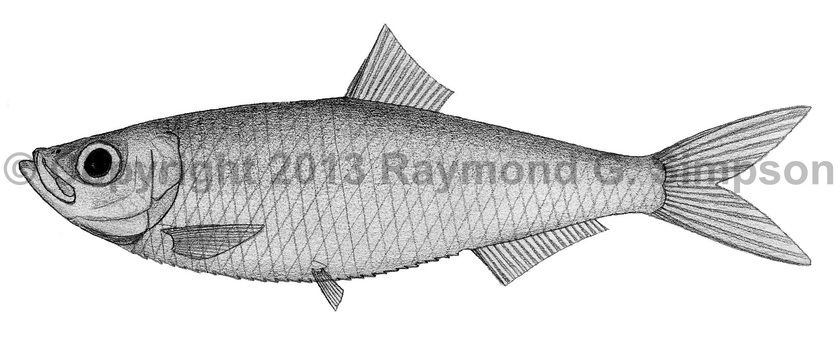
Common Name
Uruguay River Sprat
Year Described
Eigenmann, 1907
Identification
Dorsal Fin: 15-16
Anal Fin: 17-20
Pelvic Fin: 6 branched
Pectoral Fin: 12-14
Ventral Scutes:
Gill Rakers: 36-28 (first arch)
Body fusiforme, rather deep (27-41% SL), and compressed. Posterior gill margin rounded with no fleshy lobes. Eye a little smaller than snout length. Upper jaw without median notch and reaching to eye. Supramaxilla (first anterior) minute or absent. No backward pointing spine on maxilla. Dorsal and ventral profiles convex. Dorsal fin origin centered at about midbody and has a concave margin. Pelvic fin under dorsal fin origin. Anal fin low with origin under last dorsal ray. Pectoral fin low on chest. Tail forked. Body scaled. Ventral scutes with strong keels.
Color
Body silvery with a greenish to dusky back. Caudal fin dusky with a dark margin. Rest of fins clear. No silvery stripe.
Size
Maximum size to 10cm SL.
Habitat
Primarily in freshwater, but also in river mouths and brackish estuaries.
Range
Rio de la Plata and associated rivers in Argentina and Uruguay.
References
Whitehead, P.J.P. 1985. FAO Species Catalogue. Vol. 7. Clupeoid fishes of the world (suborder Clupeoidei). An annotated and illustrated catalogue of the herrings, sardines, pilchards, sprats, shads, anchovies and wolf-herrings. FAO Fish. Synop. 125(7/1):1-303. Rome: FAO.
Other Notes
Whitehead (1985) notes two ecotypes of this species named as subspecies: Ramnogaster m. melanostoma and R. m. limnoica. The latter is much more deep bodied and occurs in brackish water more frequently.